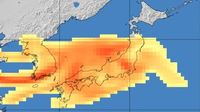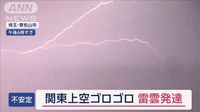As Japan welcomes the return of warmer weather, it also braces for the arrival of yellow dust starting March 25, 2025. This dust, which travels from China and Mongolia, will spread across the Kanto region and beyond, prompting health warnings and advice to residents on how to protect themselves. Experts predict that the poor visibility and potential respiratory issues associated with the dust may severely impact day-to-day life, especially for those with allergies or respiratory conditions.
According to multiple reports, including one from TBS NEWS DIG, heavy yellow dust is predicted to influence weather conditions throughout Japan, with visibility dropping significantly in various areas. The forecast advises against outdoor activities, particularly for children and the elderly, and suggests that people wear masks when going outside.
The arrival of the yellow dust follows an unexpected bout of warm weather that saw temperatures soar above 25 degrees Celsius, marking a summertime feel in regions from Okinawa to Kanto. The weather in Japan has taken on a springtime essence, with cherry blossom announcements flooding social media. Reports noted that Tokyo witnessed the blooming of cherry blossoms on March 24, infusing life into the local parks as families and friends gathered for hanami festivities amidst the warm sun.
However, the joy of spring has been overshadowed by warnings related to the yellow dust. On March 24, the Japan Meteorological Agency outlined expected conditions, indicating that the dust would start to affect areas across Kyushu, Kanto, and Tohoku. The heavy dust is expected to arrive during a period of high pollen dispersion, which could exacerbate allergies and asthma in susceptible populations.
As the dust settles on towns and cities, various regions are preparing for the worst. In particular, the Kanto region is bracing for a significant concentration of yellow dust on March 25. Reports state that daytime conditions will be post-spring-like yet shrouded under a veil of dust, reducing visibility possibly down to 2 kilometers in some areas. Cities like Nagoya and Tokyo are predicted to experience extremely high pollen levels coinciding with the dust cloud, a combination that health experts claim could pose serious challenges for those suffering from allergies or respiratory diseases.
Residents are being advised to take necessary precautions. The Ministry of Environment urges individuals to avoid exercising outdoors and to refrain from hanging laundry outside. It also suggests covering cars to minimize dust accumulation and to utilize high-efficiency particulate air (HEPA) filters indoors to reduce inhalation risk. Individuals with respiratory issues are particularly urged to stay indoors until the conditions improve.
Further complicating the weather situation, a cold front is expected to sweep across northern Japan on March 25, bringing with it thunderstorms and heavy rain to Hokkaido and Tohoku. Reports from the Japan Meteorological Agency highlight that temperatures will drop drastically after the front passes, leading to a significant change in meteorological conditions nationwide, with expected temperatures falling by around 10 degrees Celsius starting March 29.
Many have expressed concern about the dual threat of dust and cold weather. The forecast indicates that from March 25 to 26, high pollen levels will coincide with the yellow dust, particularly in urban centers. The large-scale pollen dispersion expected poses additional challenges for people with allergies, as symptoms could worsen drastically in tandem with the dust conditions. The agency's advice emphasizes that those with pollen-related allergies should be particularly cautious as their condition might exacerbate due to the yellow dust's presence.
As preparations continue, health and environmental officials remind the public to stay informed of developments in both weather patterns and dust forecasts. Planning for indoor activities may prove beneficial at this time, as forecasts predict ongoing challenges with dust and potential respiratory impacts extending into the following week.
As March comes to a close, it is evident that while warmer weather welcomes the bloom of blossoms, the looming presence of yellow dust poses a unique challenge for Japan. Residents are left to balance their springtime joys with the necessary precautions advised by health authorities to protect themselves amid these changing weather conditions.
In conclusion, as the regions anticipate changes in air quality and weather patterns, the key advice is to remain vigilant, adhere to health recommendations, and prepare for the fluctuating conditions in both temperature and visibility. Engaging in outdoor activities while managing the effects of yellow dust and pollen will require a considered approach from all residents.







